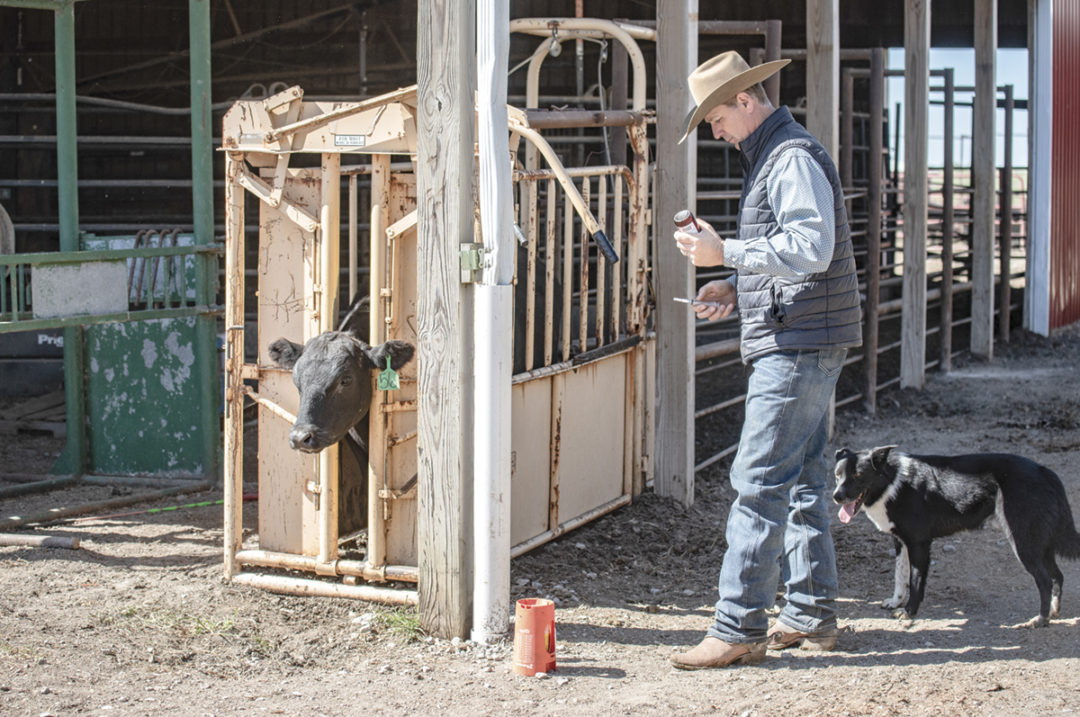When it comes to administering vaccinations, what’s best: a single-use syringe or a multidose tool, like a repeater syringe?
The answer? Well, it depends.
It really all comes down to your operation’s risk of disease transmission – more specifically, the risk of bloodborne disease transmission, which can be transmitted by using a needle multiple times. Two of the most common bloodborne diseases in cattle are anaplasmosis and bovine leukemia virus (BLV). Chances are, if you have dealt with anaplasmosis on your operation, you would know. BLV, however, is a different beast, and it can be difficult to pick up on its clinical signs alone. In all likelihood, BLV should likely be tested more commonly than it is because it can be a common disease risk. I strongly encourage that producers speak with their veterinarian to learn more about risks specific to their area.
While we can do everything we can to minimize iatrogenic transfer through needles, sleeves and dosing instruments to prevent disease spread, at the end of the day, we still have to battle vectors like ticks and flies that transfer these diseases.
Single-use syringes
Has your operation experienced bloodborne disease outbreaks such as anaplasmosis and BLV in your herd? If so, by using single-use needles you have zero possibility of transmitting those blood forms between animals. That's honestly the biggest advantage of using them compared with a repeater syringe, but one could also make the case that, by using a brand-new, sharp needle in every animal, they're going to stay sharper. But with this said, a producer can still use a repeater syringe and change the needle after each animal. Depending on the individual producer’s herd health risks, our clinic does this at times – more on this later.
Changing out needles with every animal adds a lot of time to processing cattle, but if your operation has seen its share of bloodborne disease risks, the time it takes to switch them in and out is worth it to reduce transmission risk.
Repeater syringes
The key advantages to using repeater syringes are efficiency, speed and convenience. If you're processing a lot of animals, having to change the needle between each animal does add a significant amount of time. If your operation is not at heightened risk for bloodborne diseases, investing in a quality repeater syringe is worth it. Make sure you get a reputable brand and periodically, as a best practice, you’ll want to check to make sure that you're getting the correct volume dispensed on each setting.
There are three different styles of repeater syringes.
- Barrel type – Pulls up the large amount of vaccine, usually about 50 milliliters, and you can set the dosing to that of the vaccine.
- Hose-fed style – Hooked up to the bottle, it pulls in each single dose into the tube at that time.
- Bottle-mount style – Connects from the bottle directly to the syringe.
People have their preferences for one over the other, and I’ll share that the old adage is true – you get what you pay for.
So how can producers know which option is best for their operation? It does really all boil down to the diseases that you have in your herd. If you know that you struggle with anaplasmosis or BLV, then it's probably in your best herd management practices to change needles on every cow.
If you're not really struggling with those disease risks, a good middle ground is to follow the current recommendations in place through the Beef Quality Assurance (BQA) program, which is to change the needle at least every 10 head. That has been shown to pretty significantly reduce the risk of disease transmission.
At my practice, I use a repeater syringe, and unless the herd owner practices other management styles, we routinely change the needle every 10 animals. I do have a few herds where we change the needle on every cow, and that’s historically been because of the individual operation’s proven risk for anaplasmosis.
It’s important for the efficacy of the vaccines, and to ensure healthy cattle, that producers follow vaccine handling best practices. A few good reminders include:
- All vaccines need to be stored in refrigeration; there's no vaccine that should be kept at or above room temperature for extended periods of time.
- When processing cattle, it's important to keep vaccines chilled and out of UV radiation and sunlight.
- When you're working cattle chuteside, you need to have a cooler with ice packs in it to keep vaccines cooled.
- Make sure to use a sterile needle every time you puncture the vaccine bottle.
Whether you’ll be using a single-use syringe or a repeater syringe, vaccinating our cattle against disease risks is an important part of our management program today to help guarantee a healthier, more productive herd tomorrow.









